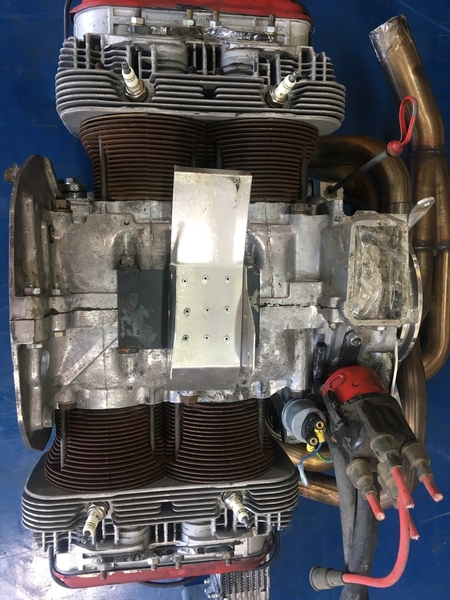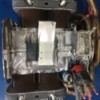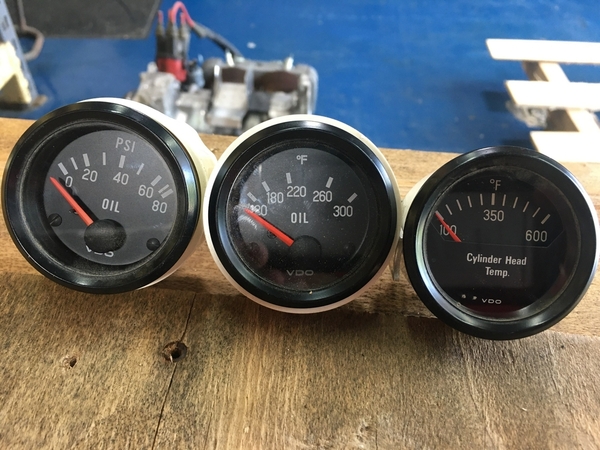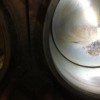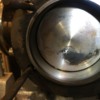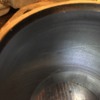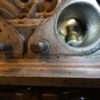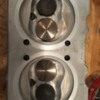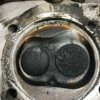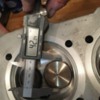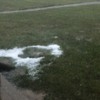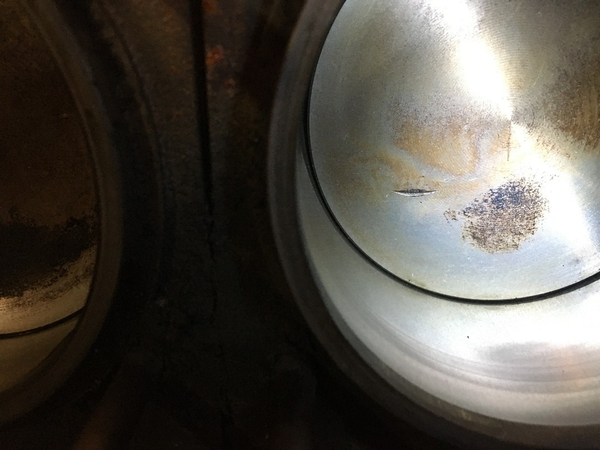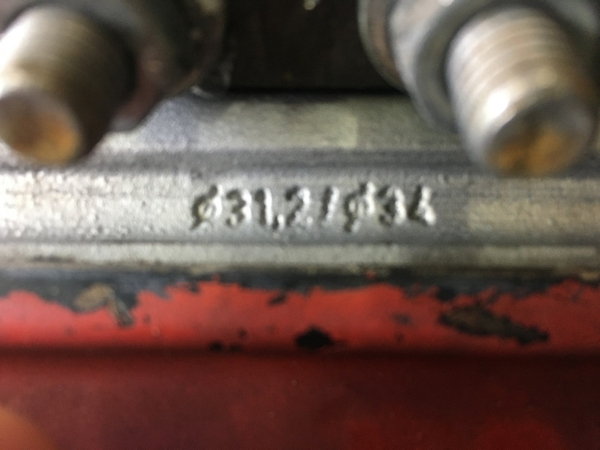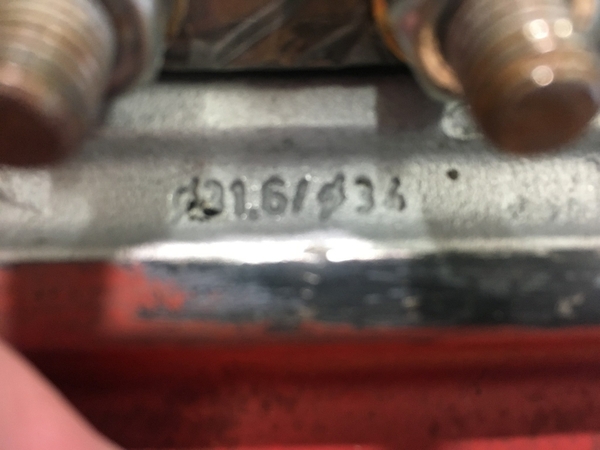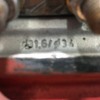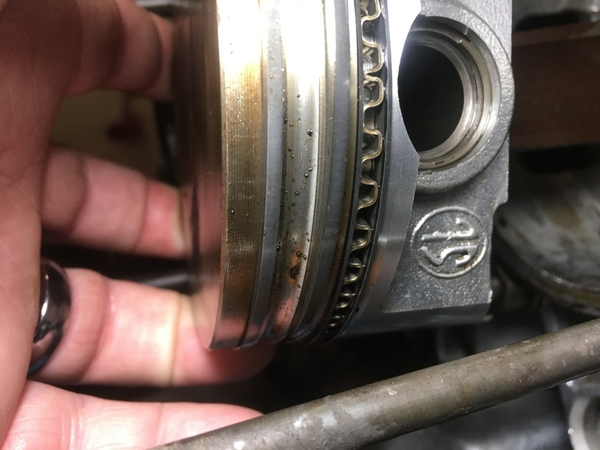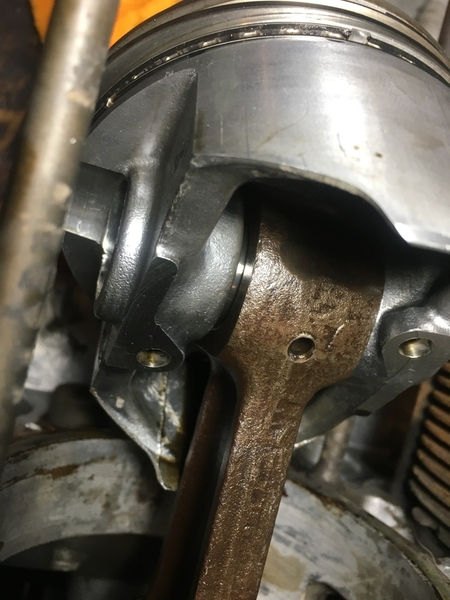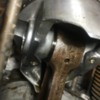@Jimmy V. Save some time and just call Jake direct. He keeps meticulous records on his builds. He is a great guy to work with...reach out you will be glad you did.
Classified postings do not allow for discussion (replies are not allowed). Direct message the member if you would like to discuss the item.
The Classified section is open to any individual (non-commercial firms) posting of items for sale. Members posting commercial advertisements must be enrolled in a Supporting Merchant program.
Postings without relevant details (PRICE, location, condition, etc.) will be deleted.
RE: Jake. Please tell him I said hello. I'm still loving my motor!
Do not discuss any modifications you may be doing or anything at all like that. Just say you bought it and would like to know the particular specs of the build.
He's a great guy and a great builder.
Do you have his email address?
Around 2005 I had acquired two of Raby's Type IV engines that went into speedsters. They were perfect engines out of the crates and the customer support was as expected ...Jake's one good guy.
@Jimmy V. if you are on Instagram or Facebook just search Jake Raby. Send him a PM and he will get back to you. He once replied to me on a 911 engine build from a deer hunt blind...
I messaged Jake. I plan pull the heads and cylinders and look into the case to see how much of the dirt has gotten in and to look at the condition of the cam. Then the all of this will go to the engine builder next week. He is almost finished with the 2276 Puma engine. I have added a pic for your viewing pleasure. I love looking at clean engines.
Attachments
I just found 3 nice VDO engine monitoring gauges in the boxes of stuff Chris sent with the engine. The truth is I could part this engine out and double my money easily but hate to tear apart a nice engine. I will stick with getting it back to it's original torquey glory.
Attachments
I have decided to take the heads off the type 4 engine. Everything I do lessens the cost that my engine guy will charge to rebuild the engine because he charges by the hour and he is very fair in the accounting. This engine which is a Raby kit built engine with heads that Jake Raby built. The heads are super nice with some porting work done and larger valves. Stainless steel 42mm Intake and 36mm exhaust. I went ahead and slipped no. 1 cylinder off and it looks very good. No scoring and some of the cross hatch still visible. I did find that the two top rings had the opening both lined up at the bottom which isn't ideal. Chris said that one of the cylinders had low compression and the engine was burning some oil. I measured the cam lift last night and it is .435" which may mean it has something like a Webcam 86A grind with 290 duration. The inside of the engine looks great and is nice and clean so the dirt and dust didn't affect it much. The cam lobes look perfect and the lift is nearly identical from valve to valve. I may get by with a top end build and have a super nice type 4 engine. I am very happy with what I am seeing now.
While writing this a huge storm has blown in. (I live 25 miles west of Louisville Ky.) and is dropping some serious hail. My poor Crossfire SRT-6 is stuck out in it. The transformer near my house just blew and my trusty natural gas powered generator has kicked on and switched my home over to generator power. I had to have this generator because my basement will flood if the sump pump isn't running, ask me how I know this.
More to come on the engine. Enjoy some engine ****.
Attachments
Hail makes for good engine building weather.
By the way I did notice where it looks like a valve has kissed the top of cylinder 1 piston. I will make sure the intake valve is checked closely for straightness.
Attachments
Does anyone know the stock valve sizes for a 1.7, 1.8 and the 2.0L 914 Type 4 engines?
I don't, but I will wager not as big as what's in there.
Pieced together from Pelican site -
1.7 I-39mm/E-33mm
1.8 I-41/E-36
2.0 I-42/E-38
I had a ,72 1.7L 914 and was told the stock exhaust valves were sodium filled.
The exhaust valves sure look like a different material compared to the intakes. The info. I found shows the 2.0 heads had 42/36 as mine have. According to Chris the PO, the heads started life as 1.8 heads and were worked over at Air cooled tech. I would need to get pics of the 2.0 and 1.8 heads to verify. The 2.0 heads are always supposedly better because they have relocated spark plug holes to give improved and complete combustion burn. From what I read they are good for 10 additional HP over reworked 1.8 heads. This engine was marketed by Raby as a 130HP/140 torque engine. Their 2270 engine was a 150HP and the 2356 was a 180hp. I am tempted to have my engine guy turn this into a monster 2356 engine. I had one in a lightened 914 auto X car years ago and it was bullet proof and fast as hell. I may be satisfied to run it in the Puma and not convert to Subaru.
Mike from Special Edition just called me and he will be stopping by my house around 5 o'clock this afternoon to see if he can figure out why my Suby Speedster won't run. If we can't figure it out he may be taking it to there shop in a couple of weeks when he comes back through from Chuck Beck's shop with a load of chassis.
It would make sense that the exhaust valves in a RAT Type 4 would be 36 mm (and not 38 mm) if the intakes were 42 mm.
A while back, a really smart guy over on TheSamba (Glen Urban, or "Modok") posted a "golden rule" of engine design regarding I/E (intake/exhaust) ratio.
.86 is kind've the magic number for things to play nicely together. There are deviations, of course, meant to accomplish one thing or another. I'm not sure if these rules apply to all engines in general, or to pushrod air-cooled engines in particular, but I'm assuming that ideal always falls within a mathematical range.
Anyhow... as per Glen, the ideal exhaust valve is 86% of the intake valve size. The exhaust port is 86% of the exhaust valve size. The exhaust port ID would be 86% of exhaust header tube ID. On the intake side, the ideal intake port size is 86% of the intake valve size, and the ideal venturi size in the carburetor would be 86% of the carburetor bore, with runners that are 86% of the intake riser/carb bore.
When you apply the math to formulas that are known to work well, they pencil out almost every time.
In this scenario, a head with a 42 mm intake valve would ideally have a 36 mm exhaust valve. The exhaust port cross-section would be about 31 mm, and the header ID would be the same size as the valve (36 mm, which is incidentally about the I/D of 1-5/8" 16 ga. exhaust pipe).
The intake port would be .86 of 42 mm (36.12 mm), and the venturi in the carb would match this dimension (or exactly the standard size of a stock vent in a 44 IDF).
Stuff like this fascinates me. The further down the wormhole one dives, the more it becomes clear that we live in an orderly universe with general rules that just work (see @Sacto Mitch's explanation as to why a V12 sounds so good).
To my way of looking it, God (rather than the devil) is in the details.
That is amazing thanks for that info. Do you know what the numbers shown in the pics attached mean? Would it be the port diameters for each?
Attachments
I just looked up an article about the type 4 head types and it said the 2.0 heads unique to the 914 and the 76/912 had valve sizes of 42/36 not 38. Portion of article below:
When Porsche introduced the 2.0L Type 4 engine in 1973, it featured a unique head design that was only used on 2.0 914/4s and the 1976 912E. This cylinder head features a unique spark plug location, the largest valve combination (42mm intake, 36mm exhaust), and a unique combustion chamber shape. The quickest and easiest way to distinguish a 914/912E 2.0 head is by the three intake manifold studs; all other Type 4 heads had 4 intake studs. These studs are readily visible in both of these pictures. Another item to note is the angle of the spark plug and how it differs from the other Type 4 heads.
My heads have 4 intake manifold studs and I was told the heads are 1.8 heads that were reworked by Jake Raby. Thus the larger valves and the porting work.
BTW...The dimple in the top of the valve indicated that it is a sodium filled material. Use all stainless valves and get rid of the sodium filled valves.
Does anyone know what brand the pistons in the pics are? I assume they are cast and not forged because of the parting lines inside showing they were cast and not hammer forged.
Attachments
A very basic web search revealed they are Keith Black pistons. They should say SL on one side and KB on the other.
Also, on the piston ring issue: I install with the compression ring gaps forward and backward(9 and 3 o'clock), oil ring up(noon). Other methods abound, but oil ring up is always good.
Thanks Danny, I did a quick search and didn't get any results. I for some reason missed the KB of the side. I focused on the LS. I believe the pistons are the cast Hypereutectic aluminum alloy and not forged, which seem to work fine in all but the most extreme situations. I have used Keith Black forged pistons on hot Corvair turbo engines so it is funny that I didn't recognize the pistons. Thanks again for the help Danny!
No problem, Jimmy. Just sorry we won't be hanging together in a month........
I am playing with the idea of building this type 4 out to a 2.6L or larger engine.
Just hung up the phone with Bill the engine builder and he is ordering the parts today to make the type 4 I bought from Chris Sutton into a 2786cc torque monster that will develop over 220 ft/lbs of torque at 3500 rpm. The build will consist of 104 P&C's and a 82mm crank. It should really push the soon to be engineless Puma down the road. Stay tuned.


